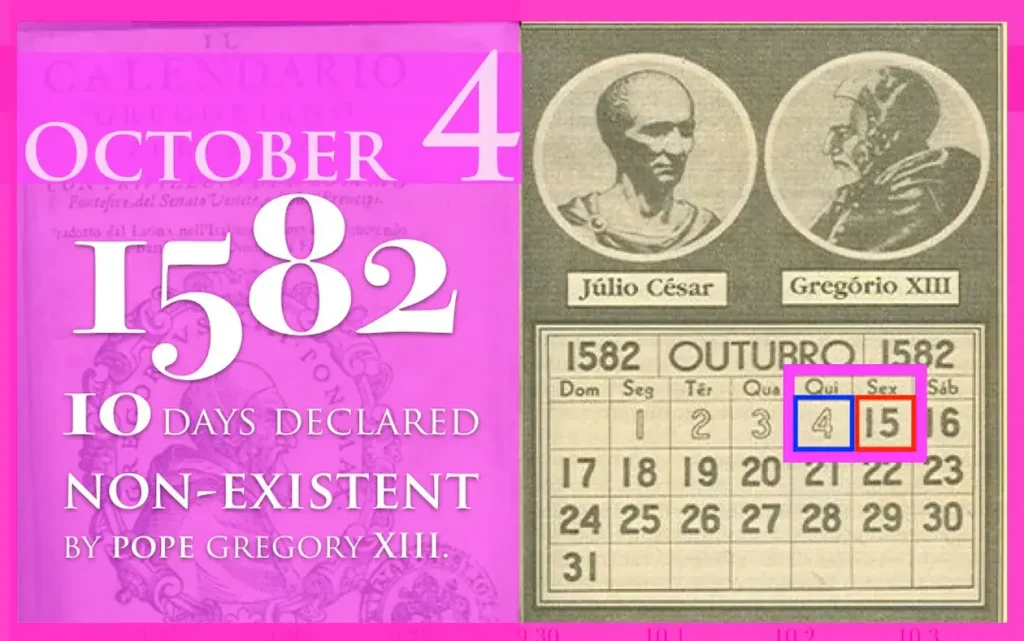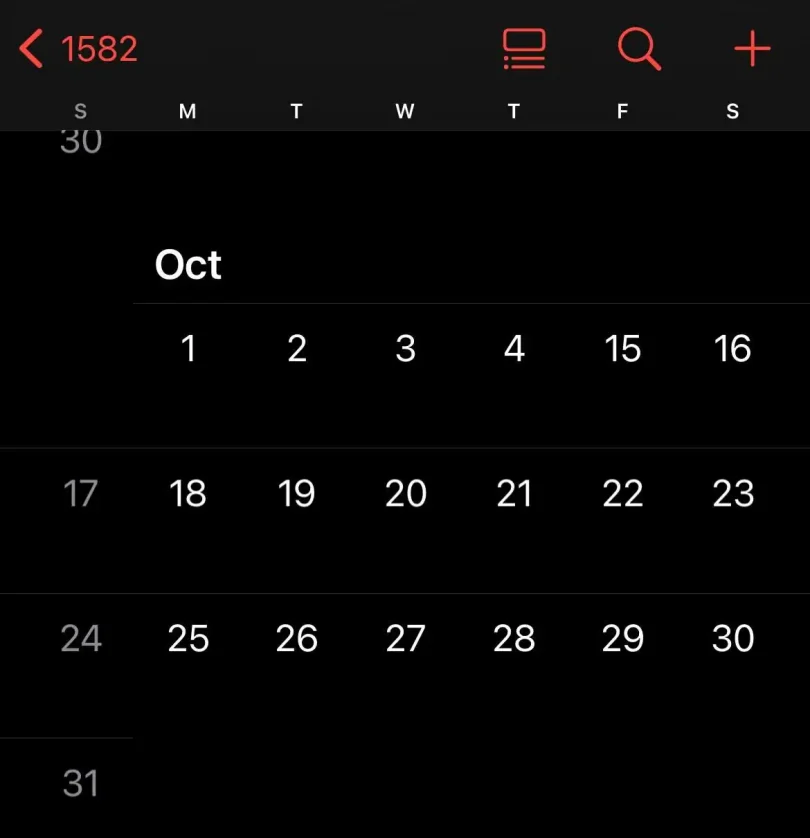TikTok users are freaking out after discovering there are some missing days from the calendar in October 1582. All sorts of conspiracy theories are flooding the app, with people saying there was a glitch in the matrix, time stopped or the world ended for a little while.
RELATED: Nepo babies – What are they and who are the big-name examples?
More than a week is missing from the year, which was almost five centuries ago, but why? Thankfully, nothing strange went on and there is a full explanation.
Here’s what happened…
10 days are missing in October 1582
This week, people on TikTok began scrolling through their iPhone calendar all the way back to 1582. Yes, you can go back that far and you’ll find something pretty creepy.
People have discovered that 10 whole days are missing from the month of October, meaning there were just 21 days rather than the usual 31. The month has October 1, 2, 3, and 4 as normal, then the calendar strangely skips to October 15 – and it’s not an iPhone glitch as much first thought!
RELATED: Lily Collins’ dad is hugely famous and people are only just finding out
There really were only 21 days in October 1582, and it’s all because of the switch to the new Gregorian calendar in that year.
What Happened to the Calendar in October 1582?
Don’t worry, there wasn’t a glitch in the matrix. The days are missing because the world switched from the Julian calendar to the Gregorian one, which is what we still use today.
As explained by Brittanica, the calendar was introduced by Pope Gregory XIII who erased ten days from the time in order to transition to the new calendar. The days between October 5 and October 14 never existed at all, and the day after October 4, 1582, was declared as October 15.

The reason for this was to bring the vernal equinox from March 11 back to March 21, but the church didn’t want to skip any major Christian festivals. So, they decided to skip the 10 days in October rather than March, and the Feast of St. Francis of Assisi on October 4 was directly followed by October 15.
Were 10 days skipped?
The vernal equinox, more commonly known as the spring equinox, is the moment the sun crosses the celestial equator in a northerly direction. There are two equinoxes every year when the amount of daylight and nighttime are of equal length and the Sun is exactly above the Equator.
The vernal equinox takes place around March 20 to 21, and the autumn equinox occurs around September 22 to 23 every year. Pope Gregory XIII introduced the Gregorian calendar as the Julian calendar, which was adopted in 45 BC, had drifted away from astronomical events like the vernal equinox.
RELATED: How much do the cast of Made in Chelsea actually get paid?
He wanted to remove the errors and get the calendar back in sync with astronomy, which is why the days needed to be dropped. However, only Italy, Poland, Portugal, Spain, and France adopted the new calendar in that year. When more countries began using it, more days had to be dropped.
The US, Canada, and the UK skipped 11 days in 1752, Japan cut 12 days in 1872, and Russia, Estonia, Greece, Turkey, and Bulgaria all dropped 13 days in various years in the 20th century.













